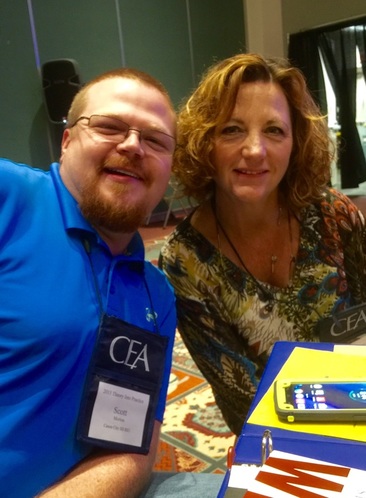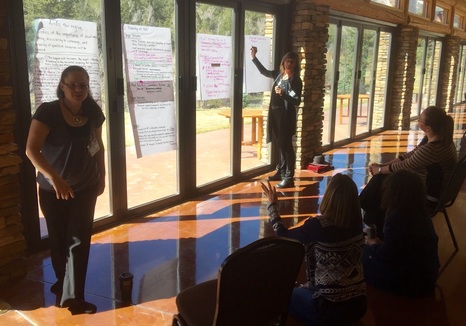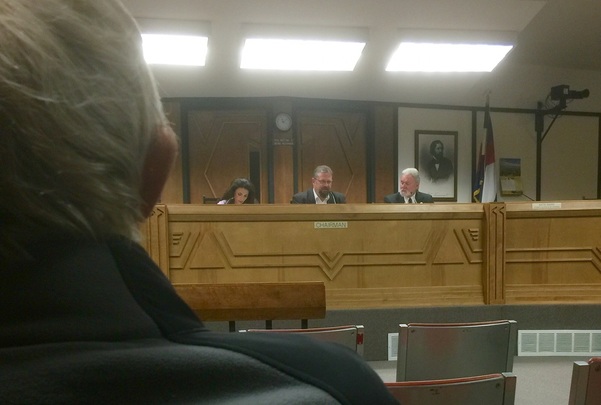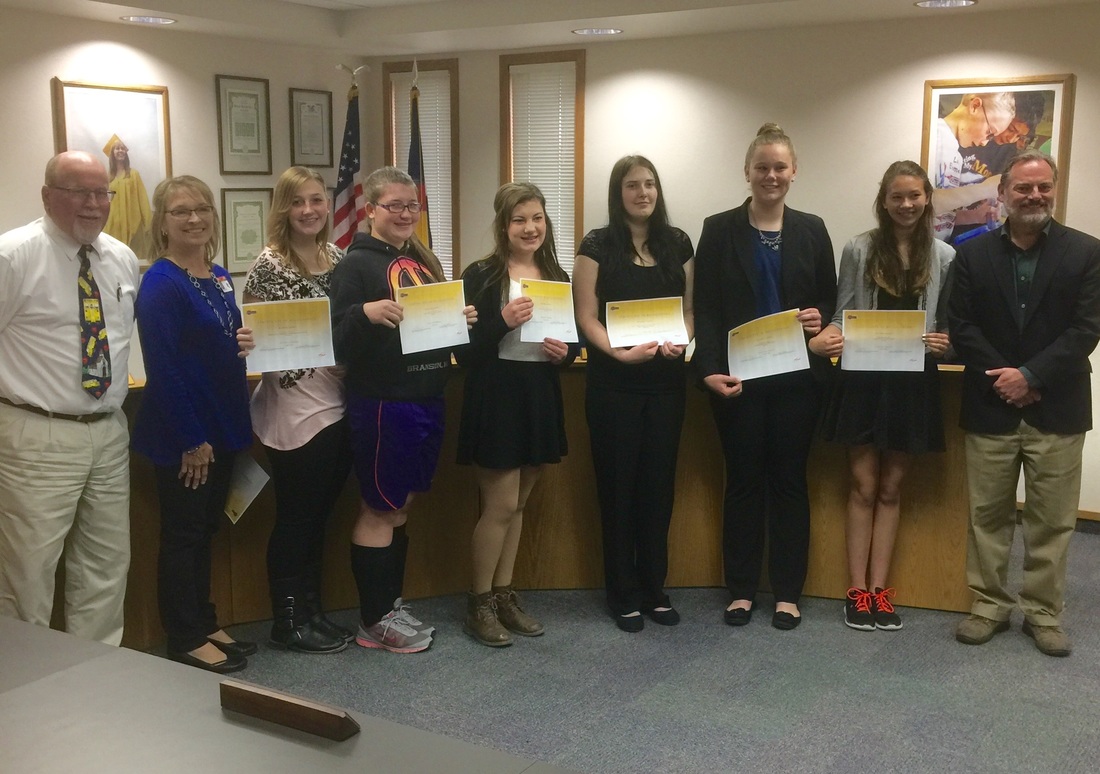Echoes from Cañon
Examples of Excellence
 Attendees at the Harrison K-8 Family Science Night.
Attendees at the Harrison K-8 Family Science Night.
At Monday's board of education meeting the school district honored Cañon City High School Family Career and Community Leaders of America members for outstanding performance at the Colorado State Leadership Conference. A number of Deb Crocket's pupils took home awards: Brittney Pearson, Silver in Hospitality, Tourism, and Recreational Event, Alexis Pearson and Bre Thorson took Silver in Life Event Planning, Amanda Reeder and Shayla Clawson took Bronze as a team in Culinary Arts Event, Tristian Radhe took Gold in Cake Design, and Courtney Meyer and Skylar Edwards took Silver in Career Investigation Event. I congratulate all these students for their great work and I also thank Mrs. Crocket for the wonderful job she does building a model Family and Consumer Studies program!
On Thursday evening Harrison K-8 School hosted a very well attended Family Science Night during which students and parents had the chance to experience science concepts in a hands on fashion. There were more than 100 attendees at this event; thanks to the entire Harrison staff for being willing to extend their work day to offer this great learning opportunity to our families!
On Saturday Cañon City Schools Gifted and Talented Education program held its annual fund raising breakfast at Cañon City’s own Mugs restaurant. A gigantic crowd was on hand and parents and staff members did a wonderful job guiding our children in the conduct of the event. I want to thank Della Reiger, Tim Jordan, Amanda Rodenbeck, Tim Creany, Emma Creany, Marsha Bell, Leslie Seufer, Lisa Sprenger, Wendy Martin, Dave Gilbert, Adam Hartman, Lacey LeDoux, Shyla Swisher, and Steve Carter for all their hard work, and I especially want to thank the good folks at Mugs for opening their doors and supporting this wonderful event.
On Thursday evening Harrison K-8 School hosted a very well attended Family Science Night during which students and parents had the chance to experience science concepts in a hands on fashion. There were more than 100 attendees at this event; thanks to the entire Harrison staff for being willing to extend their work day to offer this great learning opportunity to our families!
On Saturday Cañon City Schools Gifted and Talented Education program held its annual fund raising breakfast at Cañon City’s own Mugs restaurant. A gigantic crowd was on hand and parents and staff members did a wonderful job guiding our children in the conduct of the event. I want to thank Della Reiger, Tim Jordan, Amanda Rodenbeck, Tim Creany, Emma Creany, Marsha Bell, Leslie Seufer, Lisa Sprenger, Wendy Martin, Dave Gilbert, Adam Hartman, Lacey LeDoux, Shyla Swisher, and Steve Carter for all their hard work, and I especially want to thank the good folks at Mugs for opening their doors and supporting this wonderful event.
The Focus of Our Work
 New CES principal Scott Morton with one of his teachers Kelly Albrecht.
New CES principal Scott Morton with one of his teachers Kelly Albrecht.
On Monday we interviewed finalists for our open principal position at Cañon Exploratory School and the committee decided to recommend Scott Morton to the board of education to fill the position. Mr. Morton is currently a Teacher on Special Assignment working on attendance related matters at Cañon City High School. Scott really impressed the committee, displayed strong knowledge of the Exploratory model, and is clearly committed to keeping the building on the trajectory it has been headed. Congratulations on your opportunity through this new endeavor Scott!
We continue working on annual teacher contract negotiations, and at last week’s session we agreed on language related to the appeals process for non-probationary teachers who receive a second straight evaluation rating of ineffective or partially effective. We also discussed interests and options surrounding teacher evaluation timelines and how measures of student learning will be incorporated into our teacher evaluation process, as required by state law. This information was put in the hands of a task force that will prepare a draft revision of contract language related to all of this. We hope to take formal action on this work at Wedneday's session. I have to say negotiations sessions have been productive and, quite frankly, fun! I also thank association members for their willingness to pitch in and provide meals to participants during this process, as our work goes past the dinner hour each Wednesday. Meals have so far been provided by Robin Birch of Lincoln Elementary, a number of Washington staff members, and the school district itself.
We continue working on annual teacher contract negotiations, and at last week’s session we agreed on language related to the appeals process for non-probationary teachers who receive a second straight evaluation rating of ineffective or partially effective. We also discussed interests and options surrounding teacher evaluation timelines and how measures of student learning will be incorporated into our teacher evaluation process, as required by state law. This information was put in the hands of a task force that will prepare a draft revision of contract language related to all of this. We hope to take formal action on this work at Wedneday's session. I have to say negotiations sessions have been productive and, quite frankly, fun! I also thank association members for their willingness to pitch in and provide meals to participants during this process, as our work goes past the dinner hour each Wednesday. Meals have so far been provided by Robin Birch of Lincoln Elementary, a number of Washington staff members, and the school district itself.
Last Week
 The GATE breakfast attracted a large crowd.
The GATE breakfast attracted a large crowd.
Last week students at most grade levels were engaged in statewide CMAS and PARCC achievement testing. On Monday I participated in Cañon Exploratory School principal interviews, and ended the day in a school board work session and regular meeting. On Tuesday and Wednesday I was at Mt. Princeton Hot Springs participating in a Project LAUNCH Grant retreat designed to provide services to support the social and emotional wellness of children in Fremont and Chafee counties from birth to age 5. I returned to Cañon City in time on Wednesday to participate in contract negotiations. I then spent time on Thursday attending budgeting meetings and a District Accountability Committee meeting. On Friday I began meeting face to face with principals about building staffing levels, and on Saturday I attended the GATE program breakfast fundraiser and stopped in to view the monthly legislative hour put on by our area senator and representatives.
This Week
 CCSD Director of Special Services Kirsten Javernick leads discussion at the Project LAUNCH Retreat.
CCSD Director of Special Services Kirsten Javernick leads discussion at the Project LAUNCH Retreat.
On Monday I’ll travel to the San Luis Valley to observe a vocational video productions program to learn how we might create one in the Cañon City School District. On Tuesday I have a SAC meeting and several more face to face building staffing level meetings with principals. I also have a touching base meeting with leaders of the Cañon City Education Association on Tuesday afternoon, followed by a Cañon 20-20 task force meeting. On Wednesday we’ll resume spring contract negotiations, and on Thursday I just have a series of routine meetings. On Friday I look forward to observing a model health lesson at Cañon Exploratory School, while also visiting some buildings. On Saturday I have a wonderful date to the annual Daddy-Daughter Dance!
The Way I See It
 Senator Grantham and Representatives Navarro and Wilson participated in this week's Fremont County Legislative Hour.
Senator Grantham and Representatives Navarro and Wilson participated in this week's Fremont County Legislative Hour.
During the past few weeks I have done my best to help folks understand general school finance issues in Colorado such as how funds are allocated to school districts, where they come from, and how Colorado compares to the rest of the United States when it comes to efforts related to financing schools. This week I would like to share what all this actually looks like in Cañon City School District.
As a result of the Great Recession, and the state imposition of the Negative Factor on its school district funding mechanisms, Cañon City Schools receives approximately 3.5 million dollars less in funding per year than it would if the intent of Amendment 23 was still being met. What has been the result of this significant shortfall? First, over the past seven years in an effort to balance its budget CCSD has had to eliminate a number of key personnel, from counseling staff, to teaching staff, to instructional support staff, to classified instructional support staff, and classified staff in general. The result has been a larger student to teacher ratio in classrooms, and an inability to provide some desperately needed services to students such as mental health and guidance counseling. As a result of this lost funding CCSD has also been forced to reduce operating costs by closing several buildings (Madison Elementary and Garden Park High School), and reducing annual investments related to building improvement, technology renewal, and updating transportation equipment. Perhaps most significantly, this lack of funding has resulted in the district's inability to update instructional materials used to teach students at a time when Colorado has modernized its standards, thereby putting our educators in situations where they must teach children while lacking the tools they need to do the job well.
Despite reducing expenses in creative ways, during the last six years the district has lacked the funding necessary to award its teachers even one single step increase on its salary schedule. This has created a circumstance where educators who have worked as many as six years in the district, and who have displayed loyalty to its children, get paid no more than a brand new teacher who enters the school system with no prior experience. Should this trend continue, I fear Cañon City School District will be placed at extreme risk of losing key educators, and it will be much more difficult in the future to attract the best and brightest teachers to instruct our children.
Two experiences I have encountered since arriving in the district illustrate our financial situation most clearly. First, in an attempt to secure dollars Colorado makes available to school districts to support facilities maintenance and construction, the district went through the application process to secure a comprehensive Building Excellent Schools Today grant. In doing so, we identified nearly 11 million dollars worth of facilities maintenance and repair needs. However, because we realized that to have our best shot at receiving a grant we need to take more time to make sure all the buildings we want to address will be useable long into the future, we backed away from submitting a large grant application and limited our proposal to only a 1.4 million dollar roofing repair and increased entry security effort. Unfortunately, because Cañon City School District is required to provide a 35% cash match for projects of this size, we soon realized submitting this large grant would put our emergency facilities reserve at a dangerously low balance. Because of this we chose to decrease our grant application to projects totaling only $800,000. The end result was realizing we are so underfunded that we can't even afford to access the precious dollars the state has set aside to help school districts like ours address pressing facilities needs.
The second experience I have encountered on this front is absolutely knowing, based on past experience, exactly what it will take to increase the reading proficiency of our most highly at-risk students, yet realizing we just don’t have enough flexible funding to to do so. What more important thing is there for a school system to do than to ensure ALL children can read at grade level? How horrible is it to come to the conclusion that we simply don’t have enough dollars to do so?
Though this all sounds quite bleak, I want you all to know we have not just been sitting around complaining about our lack of funding. So far this year we have already applied for a BEST grant totaling almost 1 million dollars, a 1.5 million dollar Early Literacy grant (to bring in the reading instructional process we know will work for our most at-risk children), a $400,000 counselor corps grant, a $350,000 expelled and at-risk student support grant, a large Colorado Health Foundation grant, a number of more minor ones, and still more to come. The unfortunate truth about the grant writing process is this reality: chances we won’t get each grant we apply for are probably just as good as the chances we will. In my opinion, this is no way to run a railroad!
The end result has been we now have fewer underpaid teachers who are being asked to teach more kids, in buildings and classrooms we can’t afford to properly maintain, while being unable to access up to date technology and instructional resources aligned to new state standards to support their work.
In the coming weeks I’ll do my best to explain why we are in this difficult situation, some recent attempts that have been made to remedy these problems, and what I think the solution may be for Cañon City School District in addressing the concerns.
Thanks for listening once again!
George S. Welsh
As a result of the Great Recession, and the state imposition of the Negative Factor on its school district funding mechanisms, Cañon City Schools receives approximately 3.5 million dollars less in funding per year than it would if the intent of Amendment 23 was still being met. What has been the result of this significant shortfall? First, over the past seven years in an effort to balance its budget CCSD has had to eliminate a number of key personnel, from counseling staff, to teaching staff, to instructional support staff, to classified instructional support staff, and classified staff in general. The result has been a larger student to teacher ratio in classrooms, and an inability to provide some desperately needed services to students such as mental health and guidance counseling. As a result of this lost funding CCSD has also been forced to reduce operating costs by closing several buildings (Madison Elementary and Garden Park High School), and reducing annual investments related to building improvement, technology renewal, and updating transportation equipment. Perhaps most significantly, this lack of funding has resulted in the district's inability to update instructional materials used to teach students at a time when Colorado has modernized its standards, thereby putting our educators in situations where they must teach children while lacking the tools they need to do the job well.
Despite reducing expenses in creative ways, during the last six years the district has lacked the funding necessary to award its teachers even one single step increase on its salary schedule. This has created a circumstance where educators who have worked as many as six years in the district, and who have displayed loyalty to its children, get paid no more than a brand new teacher who enters the school system with no prior experience. Should this trend continue, I fear Cañon City School District will be placed at extreme risk of losing key educators, and it will be much more difficult in the future to attract the best and brightest teachers to instruct our children.
Two experiences I have encountered since arriving in the district illustrate our financial situation most clearly. First, in an attempt to secure dollars Colorado makes available to school districts to support facilities maintenance and construction, the district went through the application process to secure a comprehensive Building Excellent Schools Today grant. In doing so, we identified nearly 11 million dollars worth of facilities maintenance and repair needs. However, because we realized that to have our best shot at receiving a grant we need to take more time to make sure all the buildings we want to address will be useable long into the future, we backed away from submitting a large grant application and limited our proposal to only a 1.4 million dollar roofing repair and increased entry security effort. Unfortunately, because Cañon City School District is required to provide a 35% cash match for projects of this size, we soon realized submitting this large grant would put our emergency facilities reserve at a dangerously low balance. Because of this we chose to decrease our grant application to projects totaling only $800,000. The end result was realizing we are so underfunded that we can't even afford to access the precious dollars the state has set aside to help school districts like ours address pressing facilities needs.
The second experience I have encountered on this front is absolutely knowing, based on past experience, exactly what it will take to increase the reading proficiency of our most highly at-risk students, yet realizing we just don’t have enough flexible funding to to do so. What more important thing is there for a school system to do than to ensure ALL children can read at grade level? How horrible is it to come to the conclusion that we simply don’t have enough dollars to do so?
Though this all sounds quite bleak, I want you all to know we have not just been sitting around complaining about our lack of funding. So far this year we have already applied for a BEST grant totaling almost 1 million dollars, a 1.5 million dollar Early Literacy grant (to bring in the reading instructional process we know will work for our most at-risk children), a $400,000 counselor corps grant, a $350,000 expelled and at-risk student support grant, a large Colorado Health Foundation grant, a number of more minor ones, and still more to come. The unfortunate truth about the grant writing process is this reality: chances we won’t get each grant we apply for are probably just as good as the chances we will. In my opinion, this is no way to run a railroad!
The end result has been we now have fewer underpaid teachers who are being asked to teach more kids, in buildings and classrooms we can’t afford to properly maintain, while being unable to access up to date technology and instructional resources aligned to new state standards to support their work.
In the coming weeks I’ll do my best to explain why we are in this difficult situation, some recent attempts that have been made to remedy these problems, and what I think the solution may be for Cañon City School District in addressing the concerns.
Thanks for listening once again!
George S. Welsh

